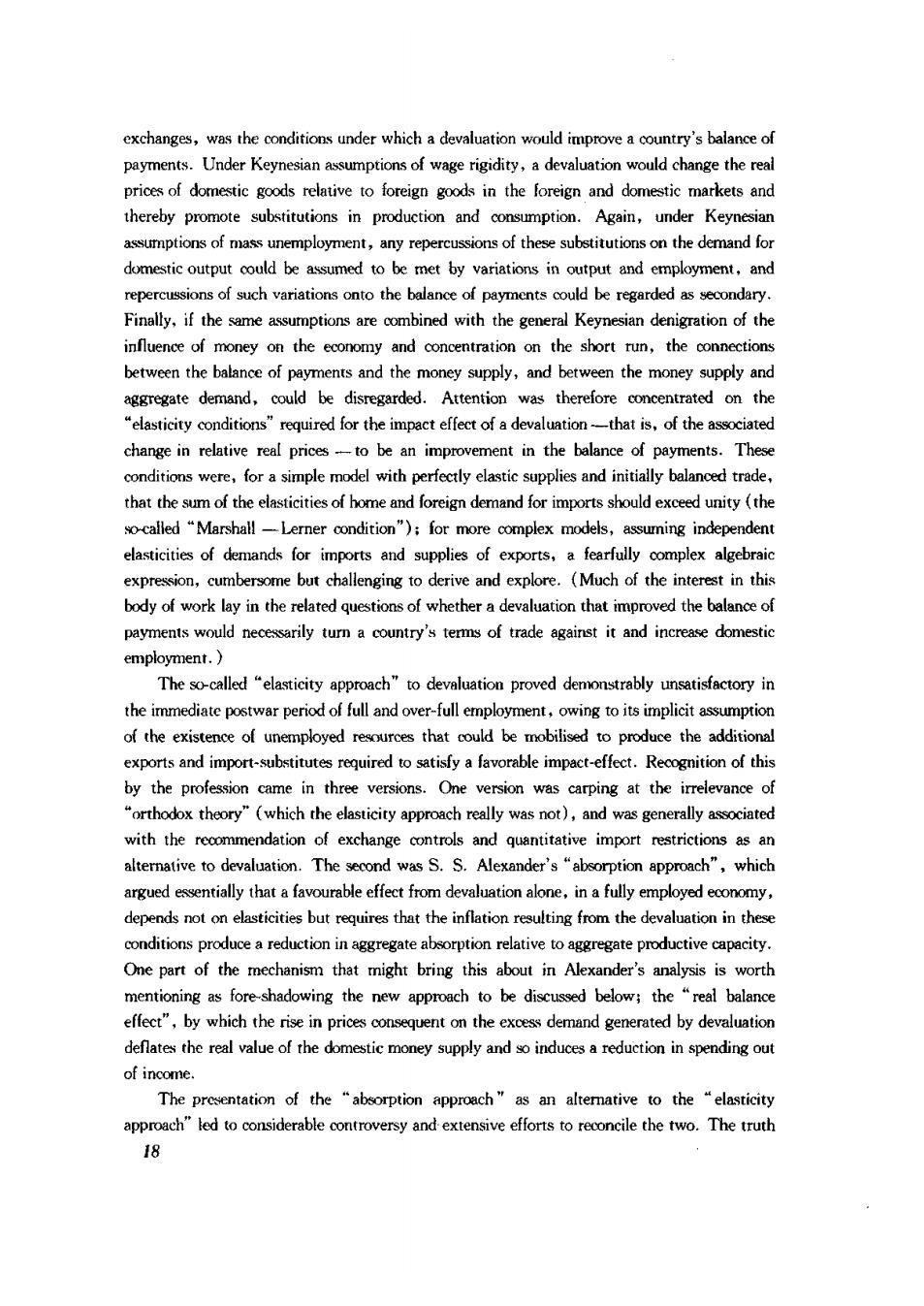正在加载图片...

exchangeswas which a devaluation oud impve's balanceof payments.Under Keynesian assumptions of wage rigidity,a devaluation would change the rea prices of domestic goods relative to foreign goods in the foreign and domestic markets and thereby promote substitutions in production and consumption. Again,under Keyne assumptions of mass unemployment,any repercussions of these substitutions on the demand fo domestic output oould be assumed to be met by variations in output and employment,and cussions of such variations onto the balance of payments oould be regarded as Finally,if the same assumptions are combined with the general Keynesian denigration of the influence of money on the economy and concentration on the short run,the connections between the balance of payments and the money supply,and between the money supply and aggregate demand,could be disregarded.Attention was therefore concentrated on the "elasticity conditions"required for the impact effect of a devaluation-that is,of the associated change in relative real prices These conditions were,for a simple model with perfectly elastic supplies and initially balanced trade that the sum of the elasticities of home and foreign demand for imports should exceed unity (the erer ndition"for more complex mdels elasticities of demands for imports and supplies of exports,a fearfully complex algebraid expression,cumbersome but challenging to derive and explore.(Much of the interest in this payments would necessarily tur a country's ters of trade against it and increase domestic employment.) the immediate postwar period of full and over-full employment,owing to its implicit assumption of the existence of un mployed resoures that ould be mobilised to produce the additional by the profession came in three versions.One version was carping at the irrelevance of "orthodox theory"(which the elasticity approach really was not),and was generally associated with the reommendation of and quntitative import restrictions as ar alternative to devaluation.The second was s.S.Alexander's "absorption approach".which depends noton elasticities but requires that the inflation the devaluation n thes conditions produce a reduction in aggregate absorption relative to aggregate productive capacity. One part of the mechanism that might bring this about in Alexander's analysis is worth mentioning as fore-shadowing the new approach to be discussed below;the "real balance effect",by which the rise in prices consequent on the excess demand generated by devaluation deflates the real value of the domestie money supply and inducesa reduction in spending out of income. The presentation of the "absorption approach"as an altemative to the "elasticity to considerable onversy and extensive efforts to reconcile the two.The truth 18